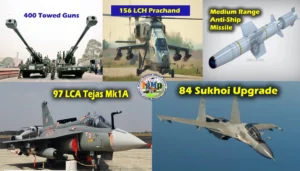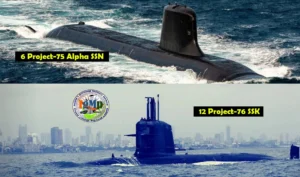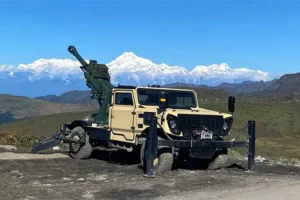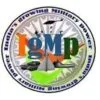
STUTTGART, Germany — NATO nations have agreed to a new action plan for bolstering the alliance’s industrial base, as governments scramble to restock their weapon arsenals while simultaneously sending military aid to Ukraine.
Nestled in the recent Vilnius, Lithuania, summit’s communique as line item 36, the document describes the Defence Production Action Plan as a way to leverage NATO’s role as “a convener, standard-setter, requirement setter and aggregator, and delivery enabler to promote sustainable defense industrial capacity.”
The plan will initially focus on land munitions, the communique states, and serve to help understand the inner workings of the alliance’s vast defense industry, including small- and medium-size enterprises.
Beginning last fall, one of the most immediate lessons identified from the war in Ukraine was the realization that NATO didn’t have sufficient ammunition stocks for the nation, said Wendy Gilmour, NATO assistant secretary general for defense investment.
“The firing rates … were far beyond anything that had been anticipated,” she said in an exclusive interview with Defense News last month.
Last September, the alliance’s Conference of National Armaments Directors, or CNAD, held a special meeting to examine the needs for land warfare equipment and battle-decisive munitions, she said. The stakeholders agreed that a new type of industrial base — or at least a different scope and organization for the post-Cold War industrial base — was required.
The procurement chiefs studied how the alliance could collectively work to increase production and determine the level of risk that might be acceptable while drawing from existing stockpiles.
Between the CNAD meeting in September 2022 and the February 2023 NATO defense ministerial in Brussels, the armaments community was given a mandate to brainstorm how NATO could address bottlenecks, which is how the Defence Production Action Plan emerged, Gilmour explained.
A public version of the document should be available in the fall, she noted.
‘Activity buckets’
The new plan includes three main “activity buckets,” Gilmour said. The first bucket involves looking for efficiencies in the acquisition and delivery of defense equipment, as well as supporting and encouraging multinational procurements.
The second bucket will examine how to more effectively match NATO’s defense planning processes with the production capability of its members’ defense-industrial bases. Gilmour said the alliance will set up a “planning board” where leaders can discuss issues such as appropriate levels of supplies for a given requirement. The idea is to better manage supply chain risks both as an alliance and as individual member nations, depending on how badly certain defense goods are expected to be needed over time, she explained.
The third bucket aims to address “fundamental challenges inherent to defense industrial cooperation,” Gilmour said. That includes reexamining the policies, procedures and contracting approaches related to intellectual property, and developing best practices so that a contractual mechanism won’t somehow prevent two nations in a battlegroup with the same equipment from simply exchanging spare parts when deployed.
It will also analyze policies surrounding mutual logistics assurances as well as examine export control regimes and sanctions from across member nations. “We are all very aware these are sovereign decisions on the part of all alliance members, but the operational impact needs to be understood so that the decisions can be made consciously,” Gilmour said.
Wait and see
The plan, as envisioned, is “long overdue” for the alliance, said Nicholas Nelson, a nonresident senior fellow for emerging technology at the Center for European Policy Analysis.
But what has yet to emerge is a mechanism for how NATO will guide its members in harnessing their defense-industrial bases, he told Defense News.
“NATO itself is not going to be the purchaser of last resort for [these procurements]; it’s going to be the member states under NATO’s direction,” he added. “So how do you incentivize them to engage better with the industry?”
Expediting contract awards will be “the central challenge” for the Defence Production Action Plan, said Rob Murray, a senior fellow with the Atlantic Council think tank. Murray spent nearly a decade at NATO before leaving in September 2022. While working for the alliance, he served as its inaugural head of innovation.
In a June article for the Atlantic Council, Murray laid out three options for NATO to help speed up government contracts, urging more adaptable sourcing strategies and better coordination among allies.
Gold standards?
Another priority area for the Defence Production Action Plan includes NATO’s extensive standards portfolio. The goal is to identify whether the alliance needs to revisit some material standards, the bedrock of many Western weapons projects, to keep pace with technological change.
“We’re never going to get every nation in NATO buying the same kit, nor would we necessarily want to,” Gilmour said. “There would be risks associated with that. But we do want all of the kits to be interoperable with one another and adhere to the same standards.”
The current standards development process typically spans about 36 months, according to Murray, and often leads to “broad compromises due to competing national interests, limiting interoperability and, ultimately, deterrence.”
He has advocated for NATO’s new industrial plan to involve companies more directly in the standards development process, to shorten the time frame to establish new standards, and to adopt “civil, open standards” for new and emerging technologies.
Getting it right
Since Russia’s invasion of Ukraine in February, NATO’s rhetoric surrounding defense procurement has amped up, with the most senior political leaders now more frequently discussing ways to improve procurement practices and ensure capability deliveries, Gilmour said.
“There is absolutely an understanding on the part of our political leaders that this is not a portfolio that they can afford to do badly, that they have to get this right,” she said.
Before arriving at her current post in November, Gilmour spent more than three decades in Canada’s foreign affairs and defense departments, and served as the country’s deputy national armaments director from 2011 to 2015.
“Being in the armaments community, I can say that there’s always been this sense of ‘rhetoric is great, but show me the money,’ ” she said.
“Every country is now trying to ensure their defense equipment, their processes, their spare parts and supply chains are ready for whatever the eventuality may be. And that means everything is being done at once,” she added. “Decision-making processes and collective cooperative program processes are not necessarily geared to producing things quickly. We’re taking a look right now internally to see how we can make that better.”
Time is of the essence for NATO to enact its new Defence Production Action Plan, Nelson noted. In two years, the momentum prompted by Russia’s war in Ukraine could dissipate as member nations pivot to other security priorities.
“Is NATO going to be responsive enough to real-world challenges which are underpinning why this action plan was needed?” he wondered.
Vivienne Machi is a reporter based in Stuttgart, Germany, contributing to Defense News’ European coverage. She previously reported for National Defense Magazine, Defense Daily, Via Satellite, Foreign Policy and the Dayton Daily News. She was named the Defence Media Awards’ best young defense journalist in 2020.
Source by [author_name]
#NATO #prepares #industry #plan #boost #arms #production








